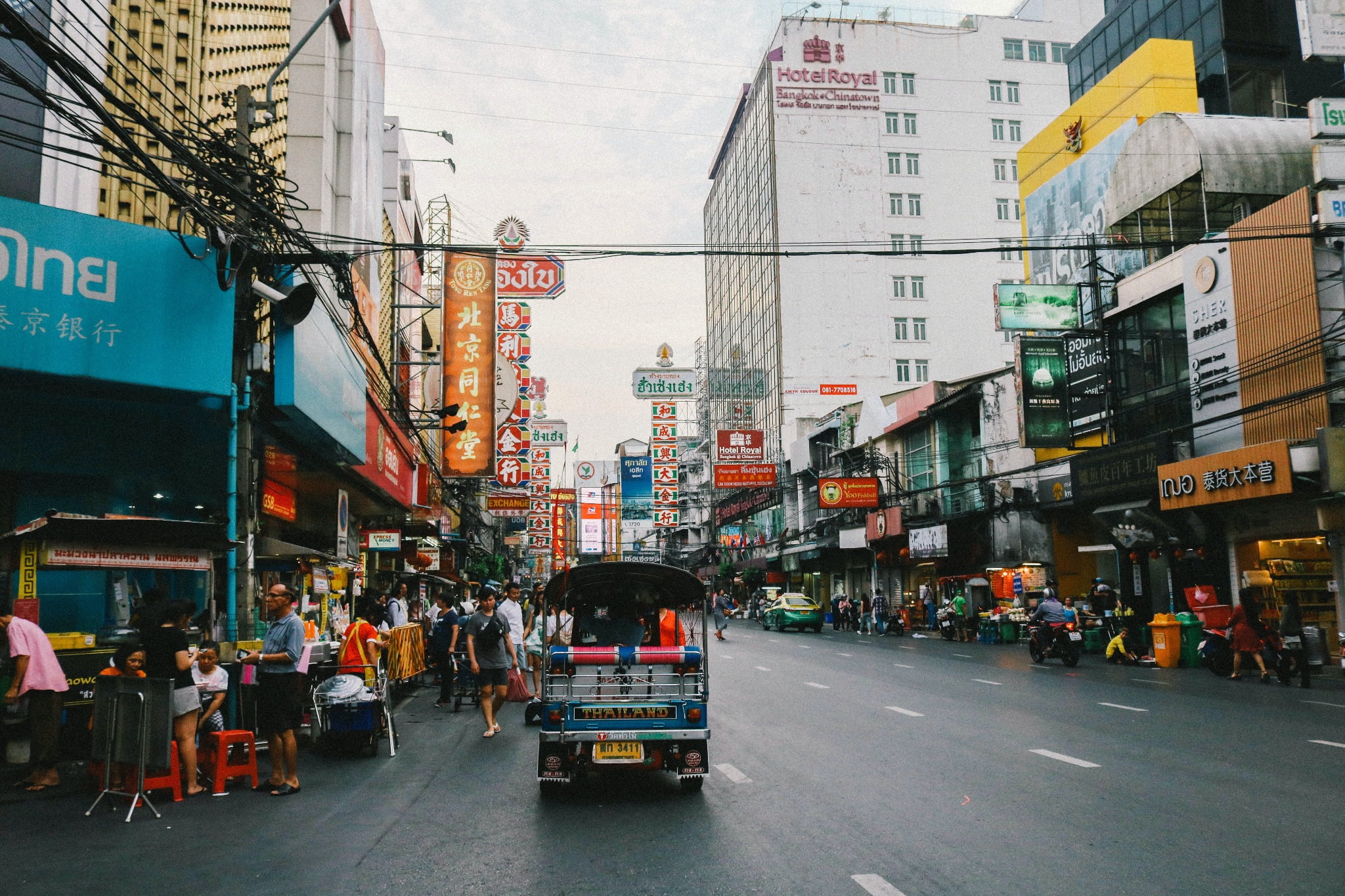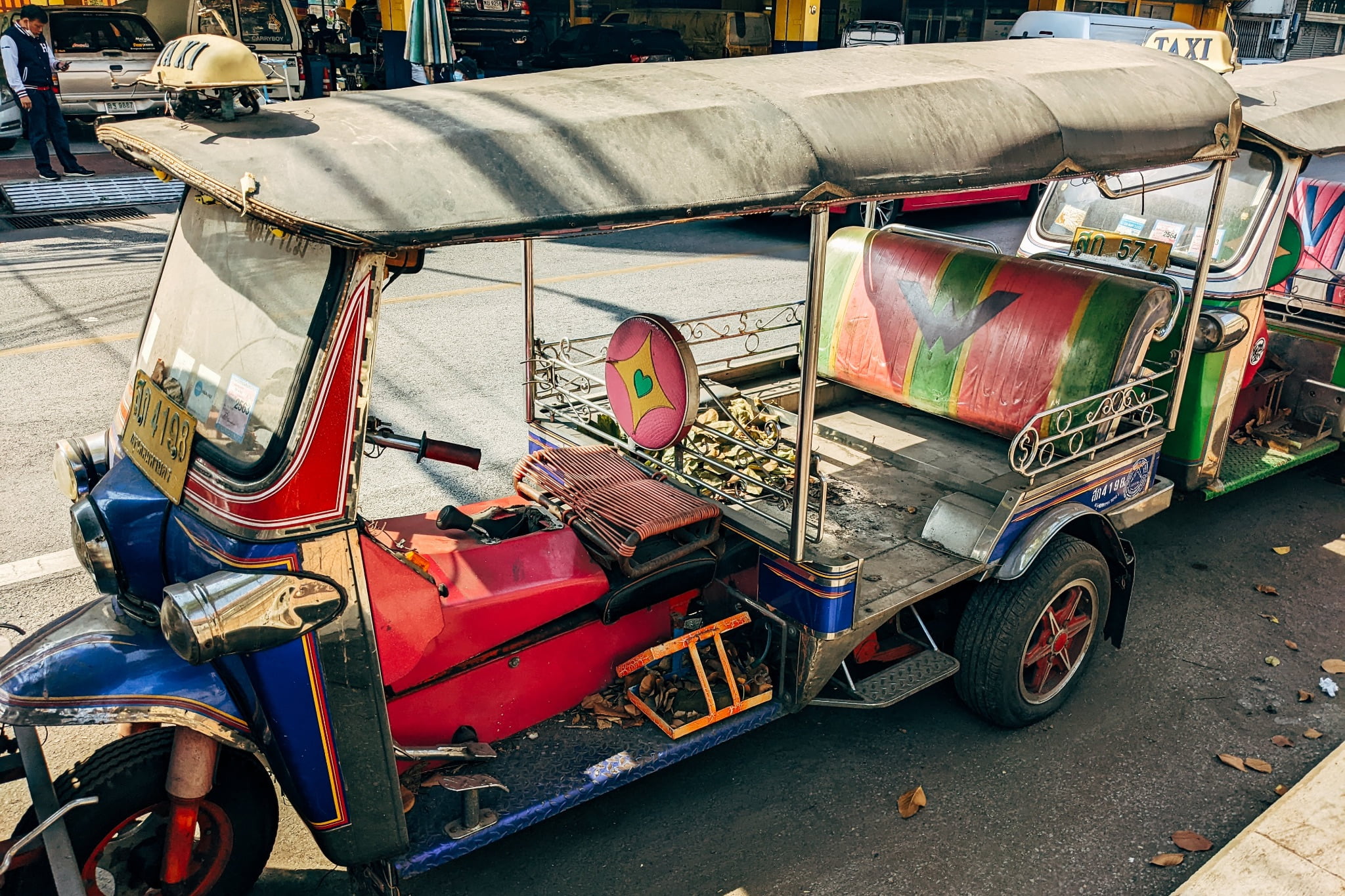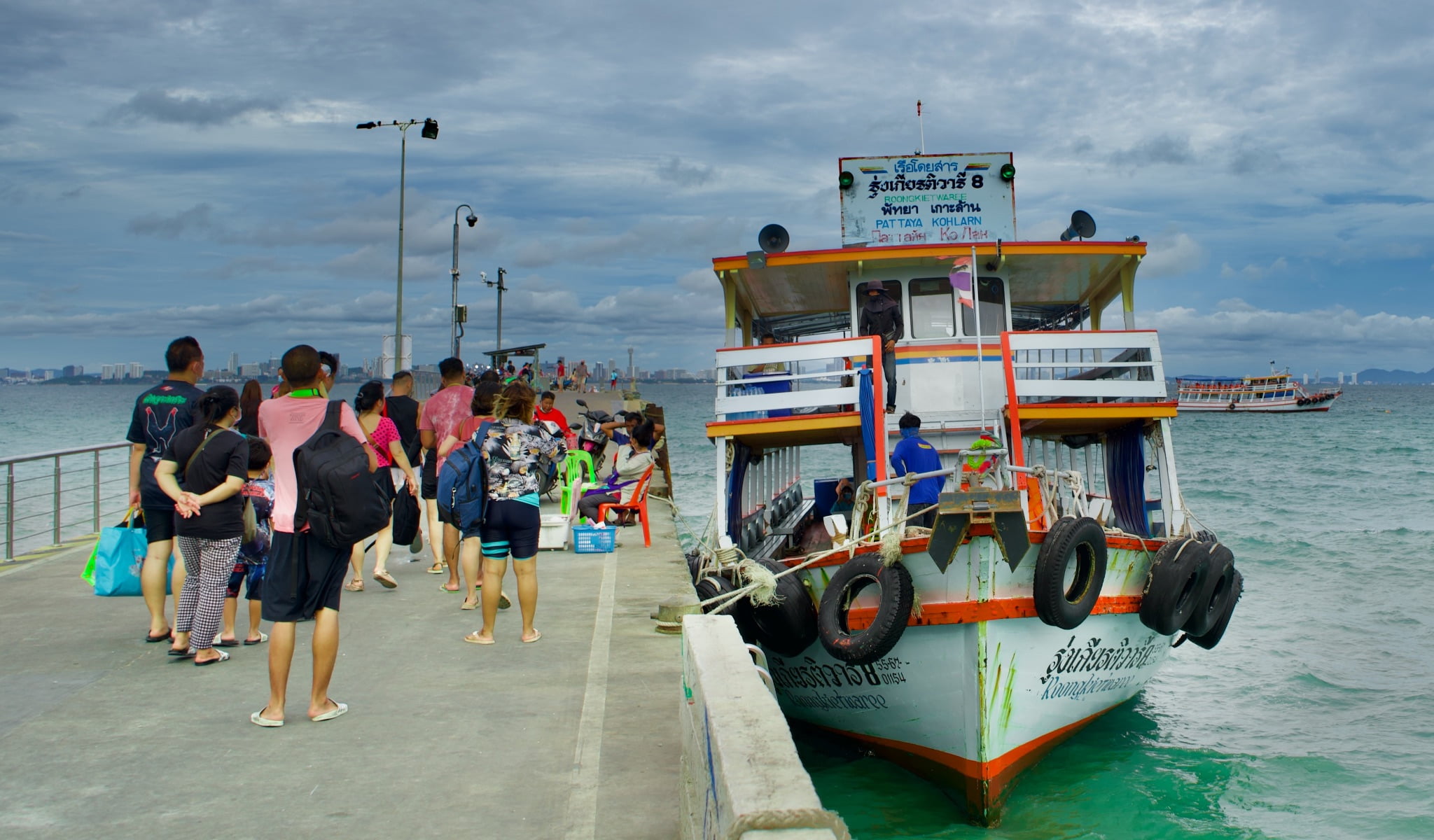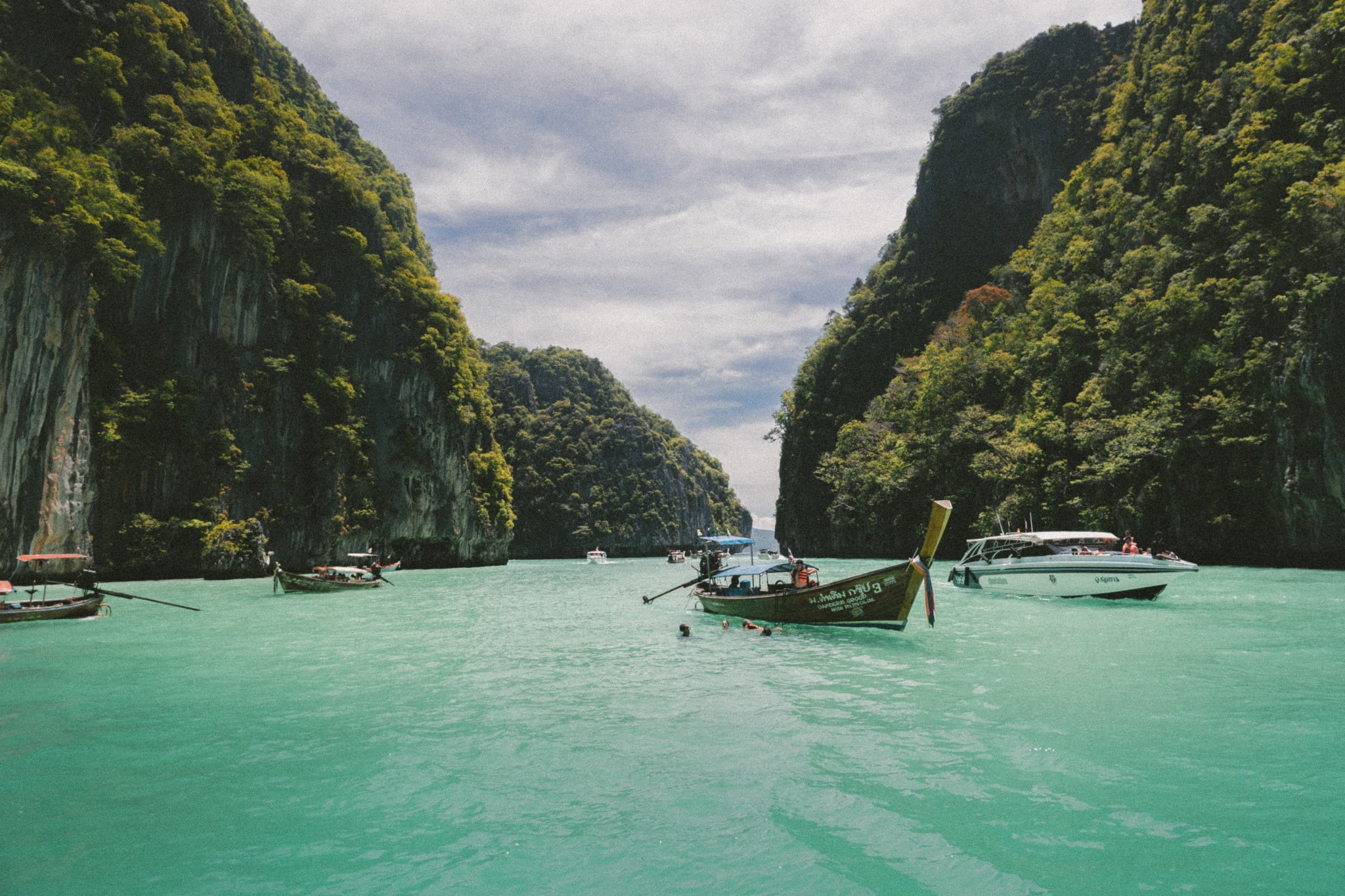Navigating Thailand: Train, Flight, or Car Rental?
Thailand, with its stunning landscapes, vibrant culture, and rich heritage, has become a dream destination for travelers around the world. When planning a trip to this beautiful country, one crucial decision you need to make is how to get around. With a well-developed transportation network, you have several options at your disposal. In this blog post, we will compare three popular choices: taking the train, flying, or renting a car. Each mode of transportation offers unique advantages and considerations, so let’s explore them further.

My Thailand Experience:
Here I am specifically writing on my transportation experience in Thailand. If you want to hear more about my travel adventure in Thailand you can check out those posts here.
My husband and I went to Thailand with our daughter who was 6 months old at the time. We flew into BKK, the larger of the 2 airports in Bangkok. We decided to fly between destinations in Thailand because we thought that would be the least time consuming with our baby.
We spent 3 days in Bangkok and then we flew to Phuket where we spent 3 more days. I wish we had 3 more days to visit Chiang Mai.
We flew on Vietjet Air and we were not a fan of that airline. Our flights were delayed many times and they even caused us to miss our flight home which pushed our whole itinerary a day back. I would recommend Nook airlines, they were kind to use and very helpful with the baby stuff.

While we were in Bangkok we used taxis, the sky train, and tour buses, and Grab to get around.
In Phuket we didn’t leave our resort except on the tour bus to go to the marina for the island hopping tour.
The biggest take away I learned was that when you fly, the flights between all the cities in Thailand are only an hour or less long flights, but the airports are so hectic that it will take you 2+ hours to get through security. They meant that we actually only got 1 day in Phuket because day 1 and 3 were spent at the airports.
Flying still takes up an entire day! If i realized this I would have taken the train system between cities. I will talk more about this next.
Overall, Thailand has many options for transport and most drivers speak english. We didn’t run into any driver that couldn’t communicate with us effectively.
The Train System:
Thailand’s railway system is extensive, connecting major cities and providing an opportunity to witness picturesque landscapes along the way. Here are some key advantages of traveling by train:
Pros:
- Scenic views: Train journeys in Thailand offer beautiful views of the countryside, especially in areas with lush greenery.
- Comfortable seating: Trains typically have more spacious seating arrangements compared to buses or planes.
- Affordable fares: Train tickets are often cheaper compared to plane tickets for similar distances.
- Social interaction: Trains provide opportunities to meet and interact with locals and fellow travelers.
Cons:
- Limited destinations: Train routes in Thailand are limited compared to buses or planes, so you may not be able to reach every destination by train.
- Limited schedules: Trains may not operate as frequently as buses or planes, which could restrict your travel flexibility.
- Slower travel time: Trains are generally slower than planes, so if you’re short on time, they might not be the most efficient option.
However, it’s important to note that train travel can be time-consuming, especially for long distances. Delays are not uncommon, and the schedules may not always align with your specific itinerary.
One of our tour guides in Bangkok told us the train only goes up to 50 MPH and has many stops. He said it can take 8 hours to get from Bangkok to Chaing Mai! He noted that you can get a night train and sleep in a sleeper car.
We used trains to get around Italy on our honeymoon and it was the best thing we ever did. We got time to sit and relax, no security, and you don’t need to show up super early because the train will pull up a few minutes before the departure time and then it will leave on time.
After not using the train in Thailand I learned my lesson that next time I travel abroad make sure I utilize the train system in whatever country I am visiting! The USA does not have a good train system so I forget that everywhere else in the world has wonderful trains to get you everywhere.

Flying:
For those with limited time or traveling long distances, flying within Thailand is a convenient option. Here’s why:
Pros:
- Fast travel: Planes are the fastest mode of transportation, allowing you to cover long distances in a short time.
- Wide network: Thailand has several domestic airports, providing access to many destinations.
- Convenience: Air travel is generally convenient, with multiple flights available throughout the day.
- Comfort: Airplanes offer comfortable seating and amenities for longer journeys.
Cons:
- Higher cost: Plane tickets are often more expensive than other modes of transportation, especially during peak travel periods.
- Airport logistics: Dealing with airport security, check-in procedures, and potential delays can be time-consuming and stressful.
- Limited baggage: Airlines may have restrictions on baggage weight and size, which could be inconvenient if you’re carrying a lot of luggage.
However, flying may be costlier, especially during peak travel seasons. It also limits your opportunity to experience the countryside and interact with locals during the journey.

Renting a Car:
Renting a car in Thailand offers a great deal of freedom and flexibility. Consider the following advantages:
Pros:
- Flexibility and Freedom: Renting a car gives you the freedom to explore Thailand at your own pace. You can visit remote areas and off-the-beaten-path destinations that may not be easily accessible by public transportation.
- Convenience: Having a car at your disposal means you don’t have to rely on public transportation schedules. You can come and go as you please, and you have the convenience of storing your belongings securely in the car.
- Comfort: Renting a car provides a higher level of comfort compared to crowded buses or trains. You can control the temperature, play your own music, and adjust the seating to your liking.
- Accessibility: In some rural areas or islands with limited public transportation options, having a car can make it easier to reach attractions and explore the surroundings.
- Privacy: Renting a car allows you to have privacy during your travels. You don’t have to share your space with strangers and can enjoy personal conversations without any disruptions.
Cons:
- Traffic and Driving Challenges: Thailand’s cities, especially Bangkok, are known for their heavy traffic congestion. Navigating through busy streets and dealing with aggressive drivers can be stressful, especially for inexperienced drivers or those unfamiliar with Thai driving habits.
- Parking Difficulties: Finding parking spaces in popular tourist areas or crowded city centers can be a challenge. Limited parking availability may require you to park further away from your destination and walk.
- Cost: Renting a car in Thailand can be relatively expensive, especially during peak tourist seasons. You’ll need to consider the cost of the rental, fuel, tolls, parking fees, and insurance, which can add up quickly.
- Language and Navigation: If you’re not familiar with the local language or driving in Thailand, it can be challenging to communicate with locals or navigate road signs and directions effectively. GPS or navigation apps can help, but there may still be language barriers in rural areas.
- Responsibility and Safety: When you rent a car, you’re responsible for any damages, accidents, or theft that may occur. Driving in unfamiliar areas or on poorly maintained roads can pose safety risks, so it’s important to exercise caution and be aware of local driving rules and regulations.
When we took a tour bus and Grab out of the city of bangkok we saw that the roadways are actually really normal and very well maintained. My husband who is a professional driver would have no issues driving here and my mom who is a super star would be able to as well.
However, traffic conditions in major cities like Bangkok can be chaotic, and driving in unfamiliar territory may be daunting for some. Additionally, parking can be challenging, and road signage may not always be in English.
I would just make sure you have a source for directions that can be reliable even if you lose internet service.

Motorbikes:
You can ride on the back of a motorbike! These get you places faster because the drivers weave between cars and cut sharp corners. It looks super scary but they are always available and much cheaper than a taxi or Grab.
Pros:
- Freedom and flexibility: Riding a motorbike gives you the freedom to explore at your own pace and reach remote areas.
- Cost-effective: Renting a motorbike is generally cheaper than hiring a taxi or taking tours for shorter distances.
- Maneuverability: Motorbikes can navigate through traffic easily, allowing you to avoid congestion in crowded areas.
Cons:
- Safety risks: Riding a motorbike can be dangerous, especially for inexperienced riders or in unfamiliar road conditions.
- Lack of protection: Motorbikes offer little to no protection in case of accidents, increasing the risk of injury.
- License requirements: You’ll need a valid motorcycle license to legally ride a motorbike in Thailand, and some insurance policies may not cover accidents if you don’t have the appropriate license.

Tuk Tuk:
Tuk Tuks are motorbikes with little carts attached. I have driven in these before when I went to Guatemala and they are fun, but I didn’t think they were baby safe. If I was traveling single or just as a couple then we would have taken these because they are cheaper and its a fun way to get around the cities.
Pros:
- Iconic experience: Riding a tuk-tuk is a unique and memorable experience, especially for tourists visiting Thailand.
- Flexibility: Tuk-tuks can maneuver through congested areas and narrow streets, providing access to destinations that may be harder to reach by larger vehicles.
- Local charm: Tuk-tuk drivers often share interesting local insights and recommendations.
Cons:
- Limited comfort: Tuk-tuks are open-air vehicles, so they may not be suitable for long journeys or during unfavorable weather conditions.
- Negotiating fares: Tuk-tuk fares are typically subject to negotiation, and tourists may find it challenging to determine fair prices.
- Safety concerns: Some tuk-tuk drivers may drive recklessly, so it’s important to choose reputable and cautious drivers.

Ferries:
There are several ferries in Thailand. You can take a boat from Bangkok up to Chaing Mai or down to Krabi. This would have been fun to do as a couple because the waterways in Thailand have amazing views.
Pros:
- Scenic coastal views: Ferries offer beautiful views of Thailand’s coastline and islands during the journey.
- Island hopping: Ferries are essential for exploring Thailand’s famous islands, such as Phuket, Koh Samui, or Phi Phi Islands.
- Relaxation: Ferry travel can be a more leisurely and enjoyable option compared to buses or cars.
Cons:
- Weather-dependent: Ferry services can be affected by adverse weather conditions, leading to cancellations or delays.
- Limited schedules: Ferries may not operate as frequently as other modes of transportation, especially during low season.
- Crowded during peak times: During popular travel periods, ferries can get crowded, making it challenging to find seating or space.

Tour buses:
If you book a tour they often have nice buses with AC and complimentary bottled water. We took a tour bus from Bangkok to the floating market and it was clean and nice. We just didn’t like having someone talk on a microphone for several hours.
Pros:
- Guided experience: Tour buses often come with knowledgeable guides who provide information about the destinations and attractions.
- Convenient for group travel: If you’re traveling with a group, tour buses offer a convenient option to explore together.
- Organized itineraries: Tour buses typically follow pre-planned itineraries, eliminating the need for individual planning and logistics.
Cons:
- Limited flexibility: Tour buses operate on fixed schedules and itineraries, leaving less room for spontaneity or personal exploration.
- Lack of privacy: You’ll be sharing the bus with other tourists, which may limit your privacy during the journey.
- Tourist-focused stops: Tour buses often make stops at designated tourist spots, which may not align with your specific interests.

Grab:
Grab is the Uber of Thailand. We used Grab for food everyday when we were there. We booked a private driver through Grab to take my family to Ayutthaya. The driver kept trying to get us to stop at places, because he was getting paid by the hour. My mom was very good at being adamant that we did not want to go to the places he would take us.
Pros:
- Convenience: Grab offers a convenient and user-friendly way to book a ride in Thailand. The app is easy to use and provides a hassle-free experience, especially for tourists who may not be familiar with local transportation options.
- Safety: Grab provides a safer alternative compared to hailing a random taxi or tuk-tuk on the street. The app allows you to track your ride, view the driver’s details, and share your trip details with friends or family for added security.
- Price transparency: Grab provides upfront pricing, which means you know the fare before you confirm the ride. This helps prevent unexpected surprises or disputes over the fare.
- Wide coverage: Grab operates in major cities and tourist destinations across Thailand. Whether you’re in Bangkok, Chiang Mai, Phuket, or other popular locations, you can usually find a Grab easily.
- Options for different needs: Grab offers various vehicle options, including cars, motorbikes, and larger vehicles for group travel. This allows you to choose the most suitable option based on your preferences and the number of people in your party.
Cons:
- Surge pricing: During peak hours or high-demand periods, Grab may implement surge pricing, which can significantly increase the cost of your ride. This can be a disadvantage if you’re traveling on a tight budget.
- Limited availability in remote areas: While Grab operates in many cities and tourist spots, it may not be available or as readily accessible in remote or less-populated areas of Thailand. In such cases, alternative transportation options may be necessary.
- Language barriers: Although the Grab app is available in English, some drivers may have limited English proficiency. Communication can sometimes be challenging, especially if you need specific instructions or have special requests.
- Reliance on technology: As Grab operates through a mobile app, you’ll need a reliable internet connection and a compatible smartphone to book rides. If you encounter connectivity issues or don’t have access to a smartphone, using Grab becomes difficult.
- Limited interaction with local culture: Using Grab may result in fewer opportunities for spontaneous interactions with locals or experiencing the local culture through shared transportation like songthaews or public buses.

Taxis:
People in Bangkok are hustlers. They wait at every corner of the street following people to try to get them in their taxi. It felt very overwhelming for me. Even when I needed a Taxi I would just walk away from people that felt too pushy.
Pro tip: If you are staying at a hotel, have your hotel call you a Taxi. This will get you in an official Taxi with a meter. Not every Taxi is official and you will have to barter the price.
Pros:
- Door-to-door service: Taxis provide convenient transportation from your location to your destination.
- Comfort and privacy: Taxis offer a comfortable and private environment for your journey.
- Efficient for short distances: Taxis are a good option for shorter trips within a city or town.
Cons:
- Price variability: Taxi fares may vary depending on the driver, time of day, and route taken, making it harder to predict costs.
- Traffic congestion: In busy areas or during peak hours, taxis can get stuck in traffic, potentially prolonging your journey.
- Language barriers: Communication with taxi drivers may be challenging if they don’t speak English or your preferred language.

Bangkok SkyTrain:
We used the skytrain once and it was very clean and very quiet. It was a nice break from the hustle and bustle of the streets of bangkok. I felt like I actually got to experience Thailand when I used the skytrain.
Pros of Bangkok SkyTrain:
- Efficient and Fast: The Bangkok SkyTrain, also known as the BTS, is one of the most efficient and fastest ways to navigate through the city. It operates on a dedicated elevated track, which allows it to bypass traffic congestion on the roads.
- Convenient Stations: The BTS has numerous stations strategically located throughout the city, making it convenient to access popular attractions, shopping centers, and business districts. The stations are well-connected, and you can easily transfer between lines.
- Air-conditioned and Comfortable: The Sky Train offers a comfortable travel experience, especially during hot and humid weather in Bangkok. The train cars are air-conditioned, providing relief from the outside heat.
- Affordable: The fare for the Sky Train is relatively inexpensive compared to other modes of transportation in Bangkok. The ticket prices are distance-based, so you only pay for the distance you travel.
- Reliability: The BTS has a reputation for being reliable and punctual. Trains arrive frequently, and you can rely on them to adhere to their schedules.
Cons of Bangkok SkyTrain:
- Crowded During Peak Hours: The Sky Train can get extremely crowded, particularly during rush hours in the morning and evening. Finding a seat may be challenging, and you may have to stand during your journey.
- Limited Coverage: While the BTS covers many popular areas in Bangkok, there are still areas that are not serviced by the Sky Train. Depending on your destination, you may need to use other modes of transportation to reach certain parts of the city.
- Limited Operating Hours: The BTS operates from approximately 6:00 AM to midnight, which means it may not be available for late-night travel. If you plan to stay out late, you might need to consider alternative transportation options.
- Accessibility for Luggage: If you are carrying heavy or bulky luggage, navigating through the crowded stations and train cars of the Sky Train can be challenging. There are no specific luggage storage areas, so you may have to manage your luggage on your own.
- Lack of Scenic Views: As the Sky Train operates on an elevated track, it doesn’t provide much of an opportunity to experience the street-level sights and scenery of Bangkok. If you prefer a more immersive and scenic travel experience, other modes of transportation might be more suitable.

Rua hang yao (literally “long-tailed boats”):
In Phuket, Krabi, or other island cities or cities with a waterway you will see these distinct boats. There are many people that offer rides on these like a ferry, but it will be just your party on the boat. Some have motors and some are still operated with an ore.
Pros of Rua Hang Yao (Long-tailed Boats) in Thailand:
- Scenic Views: Long-tailed boats provide a unique and picturesque way to explore Thailand’s waterways, including rivers, canals, and coastal areas. You can enjoy breathtaking views of lush landscapes, traditional villages, and iconic landmarks.
- Access to Remote Areas: These boats can navigate through narrow waterways and reach remote areas that are inaccessible to larger vessels. It allows you to explore hidden gems and off-the-beaten-path destinations, giving you a more authentic and intimate experience.
- Flexibility and Customization: Long-tailed boats offer flexibility in terms of route and itinerary. You can negotiate with local boat operators to customize your trip according to your preferences, allowing you to visit specific attractions or spend more time at particular locations.
- Cultural Immersion: Traveling on a long-tailed boat provides an opportunity to interact with local communities and observe their way of life up close. You can witness traditional fishing techniques, observe local craftsmen, and gain insights into the rich cultural heritage of Thailand.
- Unique Transportation Experience: Riding in a long-tailed boat is an adventure in itself. The boat’s design and propeller system create a thrilling and exhilarating experience, especially when the boat accelerates or navigates through choppy waters. It can be an exciting mode of transportation for thrill-seekers.
Cons of Rua Hang Yao (Long-tailed Boats) in Thailand:
- Weather Dependency: Long-tailed boat rides can be affected by weather conditions, particularly during the monsoon season when heavy rain and strong winds can make the waterways unsafe or disrupt schedules. It’s essential to check the weather forecast and be prepared for possible delays or cancellations.
- Limited Passenger Capacity: Long-tailed boats are generally smaller in size and have limited passenger capacity. If you’re traveling with a large group or carrying significant luggage, it might be challenging to accommodate everyone comfortably.
- Noise and Exhaust Fumes: The traditional long-tailed boat engines can be noisy, and the exhaust fumes can be bothersome for some passengers. If you’re sensitive to noise or have respiratory issues, it’s advisable to bring earplugs and consider sitting farther away from the engine.
- Lack of Amenities: Long-tailed boats usually do not have onboard amenities such as restrooms, seating cushions, or shade. Depending on the duration of the trip, this can be inconvenient, especially for longer journeys. It’s important to prepare accordingly by carrying essential items like sunscreen, hats, and water.
- Language Barrier and Negotiation: Engaging with local boat operators might require some negotiation, and language barriers can pose a challenge, particularly if you don’t speak Thai. It’s recommended to have a local guide or a reliable translator to assist you with communication and negotiation during the boat trip.

Conclusion:
Choosing the right mode of transportation in Thailand depends on various factors, including your travel preferences, budget, and time constraints. While trains provide scenic journeys and cultural experiences, flying saves time, and renting a car offers flexibility. Consider a combination of these options for a well-rounded exploration of Thailand. Whichever you choose, be sure to plan ahead, weigh the pros and cons, and embrace the unique experiences that each mode of transportation offers on your Thai adventure. Happy travels!

